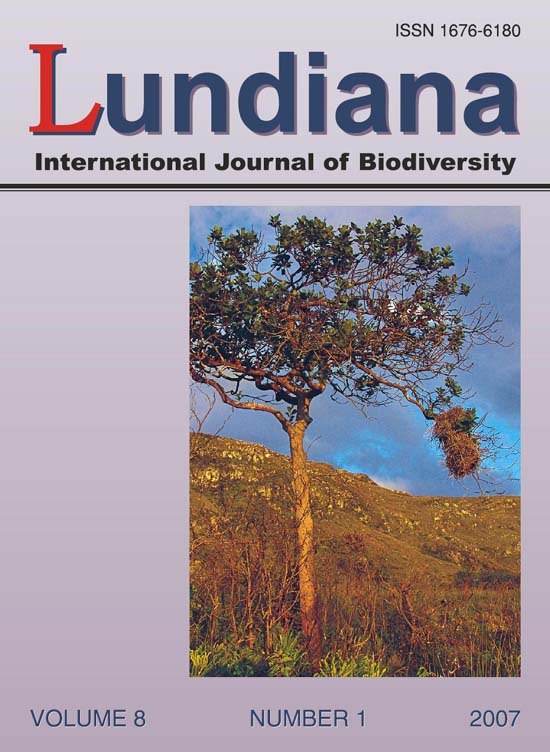Avifauna urbana no Lago Pôr do Sol, Iporá, Goiás, Brasil
DOI:
https://doi.org/10.35699/2675-5327.2007.23170Palavras-chave:
Cerrado, community, Goiás State, Range Centre Index, urban birdsResumo
Bird communities in urban areas are poorly studied in Brazil. The purpose of the present work was to describe the avifauna of the Lago Pôr do Sol, an urban lake in the municipality of Iporá in the state of Goiás, central Brazil. The fieldwork was carried out from May 2001 to April 2002, during 24 biweekly visits to the area. A transect was used to estimate species richness and bird abundance. A total of 70 species (27.2/month) belonging in 32 families and 1,701 bird findings (141.6 findings/month) were recorded. Twenty-six (37.1%) of the species found in Iporá were not recorded in a similar survey in Goiânia, 234 km away. This seems to reflect differences in the original Cerrado physiognomies in the two areas. The division of species in trophic categories showed the Iporá bird community to be dominated by omnivorous and insectivorous species. However, considering the number of individuals for any trophic level, there was a prevalence of insectivores. On the other hand, species and individuals were distributed among four habitat categories, which are related to significant habitat heterogeneity in the lake. The Range Centre Index values for most species is under 0.5, suggesting that the Lago Pôr do Sol is close to the midpoint of the geographical ranges of the bird species recorded.
Downloads
Publicado
Edição
Seção
Licença

Este trabalho está licenciado sob uma licença Creative Commons Attribution-NonCommercial 4.0 International License.

